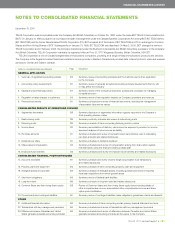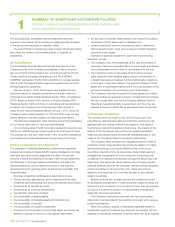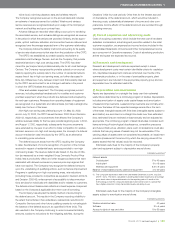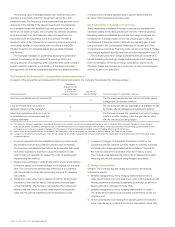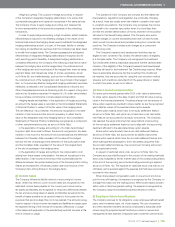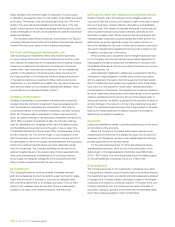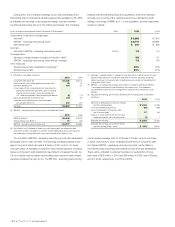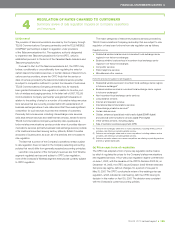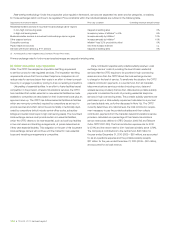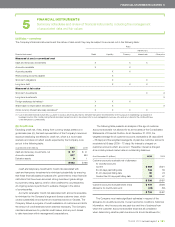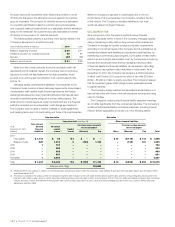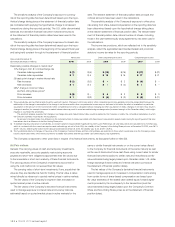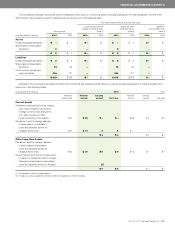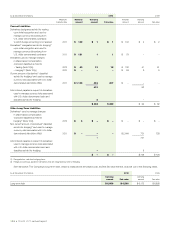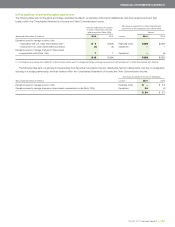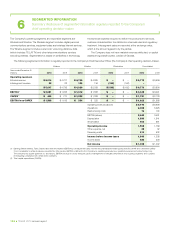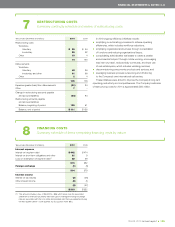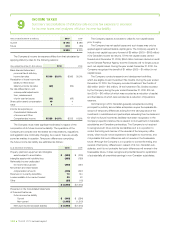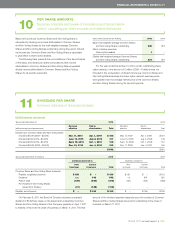Telus 2010 Annual Report Download - page 135
Download and view the complete annual report
Please find page 135 of the 2010 Telus annual report below. You can navigate through the pages in the report by either clicking on the pages listed below, or by using the keyword search tool below to find specific information within the annual report.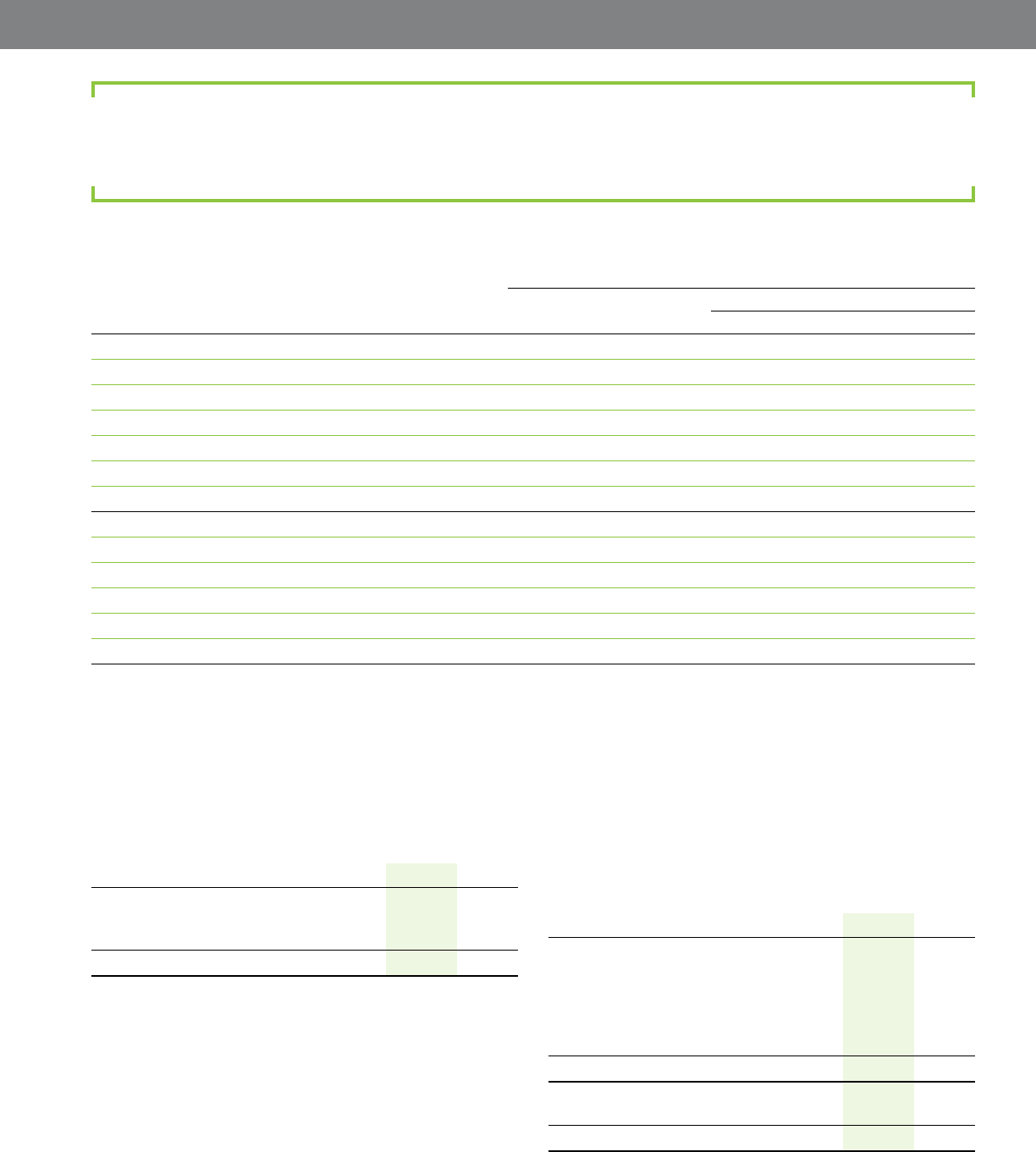
TELUS 2010 annual report . 131
FINANCIAL STATEMENTS & NOTES: 5
(a) Risks – overview
The Company’s financial instruments and the nature of risks which they may be subject to are as set out in the following table:
Risks
Market risks
Financial instrument Credit Liquidity Currency Interest rate Other price
Measured at cost or amortized cost
Cash and temporary investments X X X
Accounts receivable X X
Accounts payable X X
Restructuring accounts payable X
Short-term obligations X X
Long-term debt X X X
Measured at fair value
Short-term investments X X
Long-term investments X
Foreign exchange derivatives(1) X X X
Share-based compensation derivatives(1) X X X
Cross currency interest rate swap derivatives(1) X X X X
(1) Use of derivative financial instruments is subject to a policy which requires that no derivative transaction be entered into for the purpose of establishing a speculative or
leveraged position (the corollary being that all derivative transactions are to be entered into for risk management purposes only) and sets criteria for the creditworthiness
of the transaction counterparties.
5FINANCIAL INSTRUMENTS
Summary schedules and review of financial instruments, including the management
of associated risks and fair values
The following table presents an analysis of the age of customer
accounts receivable not allowed for as at the dates of the Consolidated
Statements of Financial Position. As at December 31, 2010, the
weighted average life of customer accounts receivable is 28 days (2009
– 35 days) and the weighted average life of past-due customer accounts
receivable is 59 days (2009 – 72 days). No interest is charged on
customer accounts which are current. Thereafter, interest is charged
at an industry-based market rate on outstanding balances.
As at December 31 (millions) 2010 2009
Customer accounts receivable net of allowance
for doubtful accounts
Current $ß489 $ß321
30–60 days past billing date 144 86
61–90 days past billing date 35 23
Greater than 90 days past billing date 32 67
$ß700 $ß497
Customer accounts receivable (Note 21(b)) $ß741 $ß556
Allowance for doubtful accounts (41) (59)
$ß700 $ß497
The Company must make significant estimates in respect of the
allowance for doubtful accounts. Current economic conditions, historical
information, why the accounts are past-due and line of business from
which the customer accounts receivable arose are all considered
when determining whether past-due accounts should be allowed for;
(b) Credit risk
Excluding credit risk, if any, arising from currency swaps settled on a
gross basis (see (c)), the best representation of the Company’s maximum
exposure (excluding tax effects) to credit risk, which is a worst-case
scenario and does not reflect results expected by the Company, is as
set out in the following table:
As at December 31 (millions) 2010 2009
Cash and temporary investments, net $ß 17 $ß 41
Accounts receivable 917 694
Derivative assets 9 1
$ß943 $ß736
Cash and temporary investments: Credit risk associated with
cash and temporary investments is minimized substantially by ensuring
that these financial assets are placed with: governments; major financial
institutions that have been accorded strong investment grade ratings
by a primary rating agency; and/or other creditworthy counterparties.
An ongoing review is performed to evaluate changes in the status
of counterparties.
Accounts receivable: Credit risk associated with accounts receivable
is minimized by the Company’s large and diverse customer base, which
covers substantially all consumer and business sectors in Canada. The
Company follows a program of credit evaluations of customers and limits
the amount of credit extended when deemed necessary. The Company
maintains allowances for potential credit losses, and any such losses
to date have been within management’s expectations.


